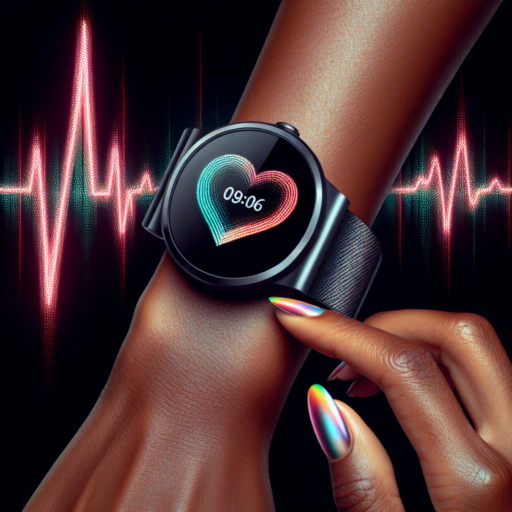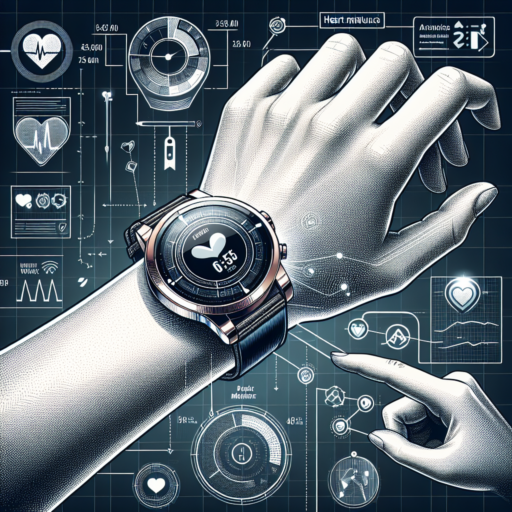What is the best watch for heart monitoring?
Finding the best watch for heart monitoring hinges on identifying a device that not only offers accurate heart rate readings but also packs in features that cater to a broad spectrum of health tracking functionalities. Heart rate monitoring has evolved from a simple tick-tock to a sophisticated health measurement tool, integral for both athletes and health-conscious individuals alike. In this context, certain watches stand out for their precision, reliability, and comprehensive health insights.
Key Features in Top Heart Monitoring Watches
When searching for the elite in heart rate monitoring watches, it’s essential to focus on accuracy and real-time tracking capabilities. The best watches offer continuous heart rate monitoring, detailed analytics on heart rate variability (HRV), and stress level insights. Additionally, the integration of GPS tracking and waterproof designs further enrich the health monitoring experience, enabling users to track their performance across a variety of physical activities and environments.
Recommended Models for Heart Monitoring
While numerous models claim supremacy in heart monitoring, certain brands have consistently set benchmarks. Watches from companies like Garmin, Apple, and Fitbit are often celebrated for their innovative health tracking features, including advanced heart rate sensors, ECG capabilities, and oxygen saturation measurements. These models not only deliver precise heart monitoring but also offer a holistic view of the wearer’s overall health through sleep tracking, activity recognition, and more.
Can a smartwatch detect heart problems?
The question of whether a smartwatch can detect heart problems is increasingly pertinent as wearable technology advances. As these devices become ever more sophisticated, their capacity to monitor vital health metrics expands, presenting an enticing prospect for early detection and management of cardiovascular diseases. But to what extent can they truly identify heart-related issues?
Heart rate monitoring is one of the basic functions of most smartwatches. By using photoplethysmography (PPG) technology, smartwatches emit light onto the skin and measure the amount of light reflected back. This data is used to calculate heart rate, which can be indicative of heart problems if abnormalities such as unusually high or low beats per minute are consistently detected. However, it’s crucial to understand that while this feature can serve as a preliminary indicator, it is not foolproof.
Several high-end smartwatches have gone a step further by incorporating Electrocardiogram (ECG or EKG) features. This significant upgrade allows these devices to monitor for conditions such as atrial fibrillation (Afib), which is a notorious precursor to more severe heart complications. By placing a finger on the smartwatch’s crown or bezel, it measures electrical signals from the heart, providing insights much akin to a single-lead ECG. Nevertheless, while promising, consumers should bear in mind that the accuracy and reliability of these readings can vary and should not replace professional medical diagnostics.
No se han encontrado productos.
Do heart rate monitor watches really work?
The question of whether heart rate monitor watches truly work is one that garners significant attention from fitness enthusiasts and health-conscious individuals alike. In essence, these devices are designed to offer real-time insights into the wearer’s heart rate, allowing for a more tailored and potentially effective workout regimen. Yet, the efficacy of these gadgets can depend on several factors including the technology employed, the accuracy of sensors, and how the user wears and interacts with the device.
Most modern heart rate monitor watches utilize optical sensor technology, which measures the blood flow through the wrist. This method, known as photoplethysmography (PPG), is generally accurate for steady-state exercises like running or cycling. However, accuracy can diminish during high-intensity interval training (HIIT) or activities that involve irregular movements, as these can disrupt the sensor’s ability to maintain consistent contact with the skin.
Manufacturers continuously strive to improve the precision of these watches through advancements in technology and design. For example, features such as water resistance, improved battery life, and software algorithms designed to filter out noise, have all contributed to enhancing their reliability. Despite these efforts, it’s crucial for users to have realistic expectations about the performance of heart rate monitor watches. Fitting the watch correctly, ensuring clean skin contact, and periodically calibrating the device if required, can all play a critical role in maximizing its accuracy and functionality.
What is the most accurate heart rate monitor?
Identifying the most accurate heart rate monitor depends on various factors including usage scenario, design preference, and the specific health metrics an individual wants to track. Whether for sports performance, health monitoring, or daily fitness tracking, the demand for precision in measuring heart rate has led to technological advancements in both chest strap and wrist-based devices.
Chest Strap Monitors
Chest strap heart rate monitors are widely recognized for their accuracy. They work by detecting electrical signals produced by the heart’s contractions, providing real-time data. This method closely mirrors the technology used in medical devices, making them a preferred choice for athletes and fitness enthusiasts who prioritize precision. Brands like Polar and Garmin are often noted for their high-quality chest straps, offering connectivity to various fitness apps and devices.
Wrist-based Monitors
On the other hand, wrist-based heart rate monitors, such as those integrated into fitness watches and trackers, offer convenience and continuous monitoring. While they might slightly lag in accuracy compared to chest straps due to their optical sensors (which measure changes in blood flow rather than electrical activity), advancements in technology have significantly narrowed this gap. Products from Apple, Fitbit, and Garmin provide sophisticated algorithms to improve precision, making them suitable for everyday use.




